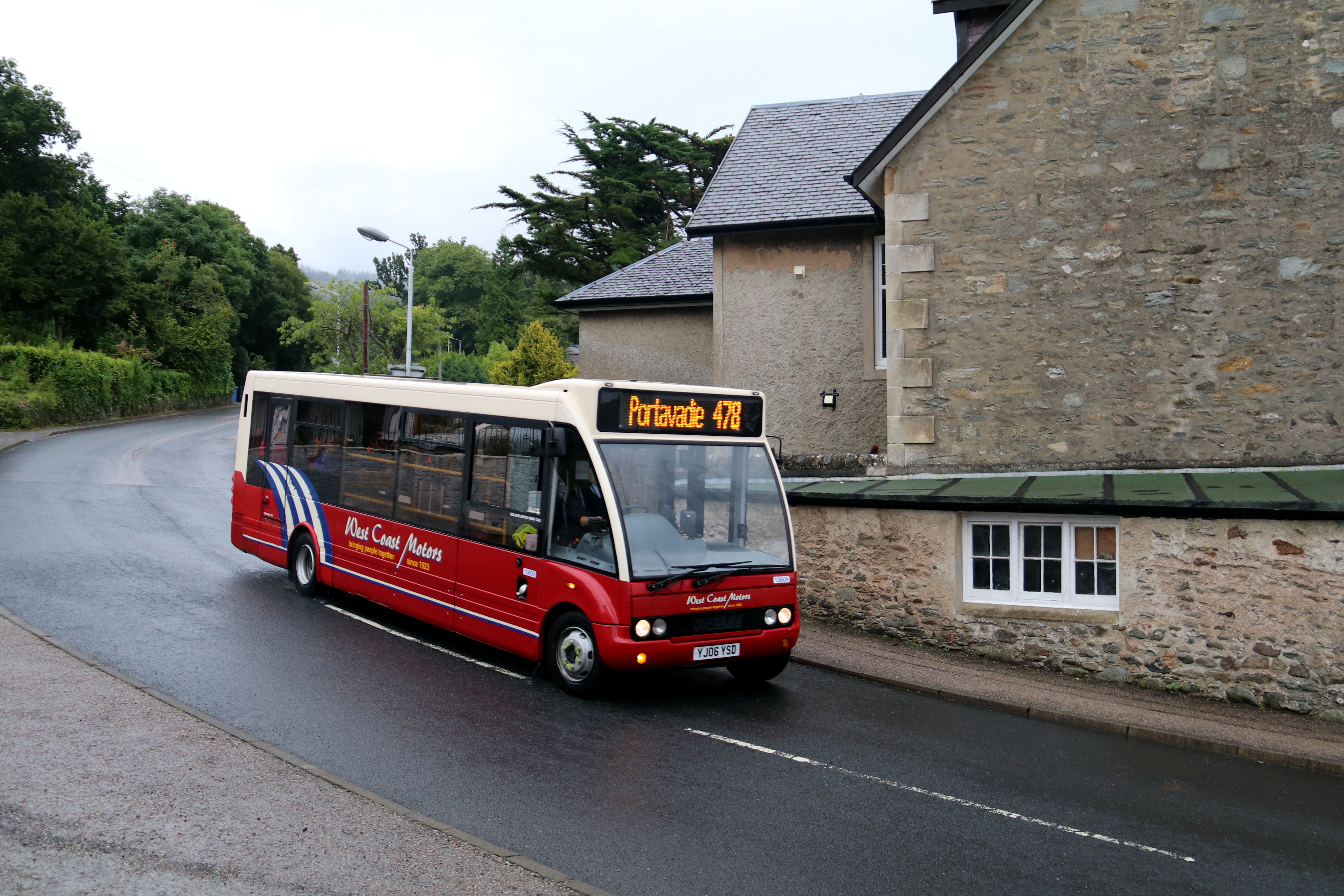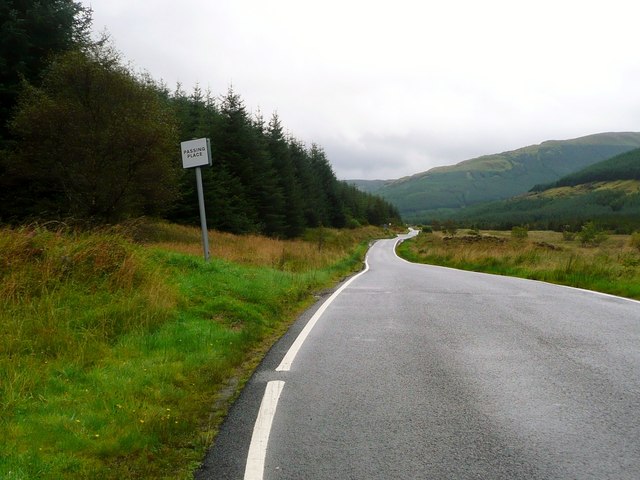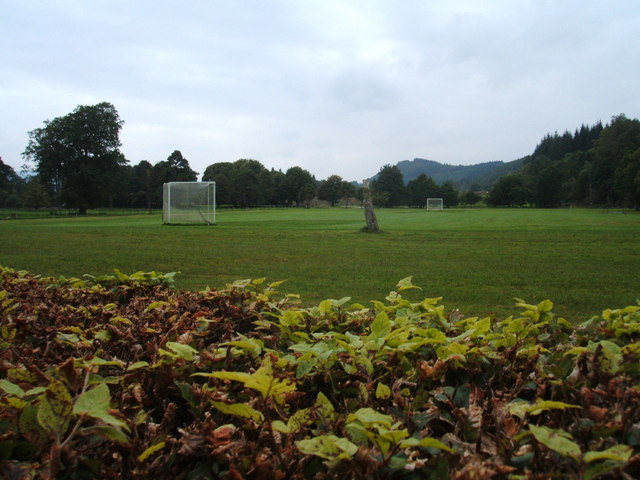|
Tighnabruaich
Tighnabruaich (; ) is a village on the Cowal Peninsula, on the western arm of the Kyles of Bute in Argyll and Bute, west of Scotland. In 2011 the population was 660. It is west of Glasgow and north of the Isle of Arran. Tighnabruaich is now part of a continuous coastal strip of housing that joins onto Kames. Transport Tighnabruaich is on the A8003 road, which is long and travels to the A886 in the east. The A8003 was built in the 1960s. The B8000 the original road, travels down the west coast of the Cowal peninsula from Newton in the north again on the A886, away. The village was more reliant on the sea for the transport of passengers and freight until the completion of the shorter A8003. The village is served by the 478 Dunoon–Portavadie bus, operated by West Coast Motors. History A pier was possibly built in the 1830s by the Castle Steamship Company, a forerunner of Caledonian MacBrayne. It was a stopping place for paddle steamers and Clyde puffers. The woode ... [...More Info...] [...Related Items...] OR: [Wikipedia] [Google] [Baidu] |
Tighnabruaich Lifeboat Station
Tighnabruaich Lifeboat Station is located at the harbour at Tighnabruaich, a village on the Cowal, Cowal peninsula, on the Kyles of Bute, in Argyll and Bute, Scotland. A lifeboat was first stationed at Tighnabruaich by the Royal National Lifeboat Institution (RNLI) in May 1967. The station currently operates a Inshore lifeboat (ILB), the ''James and Helen Mason'' (B-862), on station since 2012. History In 1962, the number of rescues or attempted rescues by All-weather lifeboats in the summer months was 98, with the number of lives rescued being 133. In 1963, in response to an increasing amount of water-based leisure activity, the RNLI began trials of small fast Inshore lifeboats, placed at various locations around the country. These were easily launched with just a few people, ideal to respond quickly to local emergencies. This quickly proved to be very successful. In 1963, there were 226 rescues or attempted rescues in the summer months, as a result of which 225 lives were ... [...More Info...] [...Related Items...] OR: [Wikipedia] [Google] [Baidu] |
Kyles Athletic
Kyles Athletic Shinty Club is a shinty team from Tighnabruaich, Argyll, Scotland. It is one of the sport's most illustrious names, presently playing in the Marine Harvest Premiership with their second team is playing in South Division one. In 2012 they won the Camanachd Cup for the first time since 1994, defeating local rivals Inveraray in the final. History The club was founded in 1896 as ''Kyles Athletic Football and Shinty Club'', the same year as the first Camanachd Cup, which Kyles have gone on to win more times than any other club apart from the Badenoch giants, Newtonmore, sharing the second place spot with Kingussie, 21 times in all. They have also won the Celtic Society Cup 29 times and the MacAulay Cup a further 10 times. They won the Grand Slam in 1966. (At that point consisting of the Camanachd, MacAulay, Celtic Society and Dunn Senior League.) Kyles play in royal blue shirts with white shorts and red stockings as their first set of jerseys were presented by Ra ... [...More Info...] [...Related Items...] OR: [Wikipedia] [Google] [Baidu] |
Kyles Of Bute
The Kyles of Bute () form a narrow sea channel that separates the northern end of the Isle of Bute from the Cowal, Cowal Peninsula in Argyll and Bute, on the Scotland, Scottish mainland. The surrounding hillsides are roughly wooded, and overlooked by rocky tops and areas of moorland. The Kyles are split into the East and West Kyles. The East Kyle () runs from Rothesay, Argyll and Bute, Rothesay Bay north west up to the entrance to Loch Riddon. Here at the northern end of the East Kyle are the Burnt Islands and the island of Eilean Dubh, Kyles of Bute, Eilean Dubh. The West Kyle () runs from here southwest, past the village of Tighnabruaich out to the Sound of Bute.Ordnance Survey Explorer Map. Sheet 362: Cowal West & Isle of Bute. The area is a designated National scenic area (Scotland), National Scenic Area. The Kyles are reflected in the name of Tighnabruaich-based Shinty team Kyles Athletic. Transport The narrowest strait is only some across and is spanned by the Caledonian ... [...More Info...] [...Related Items...] OR: [Wikipedia] [Google] [Baidu] |
Cowal
Cowal () is a rugged peninsula in Argyll and Bute, on the west coast of Scotland. It is connected to the mainland to the north, and is bounded by Loch Fyne to the west, by Loch Long and the Firth of Clyde to the east, and by the Kyles of Bute to the south. Argyll is the historic county that the Cowal peninsula was within. Inveraray was the county town. The northern part of the peninsula is covered by Argyll Forest Park and also includes the Arrochar Alps. In the south, the peninsula is divided into three forks by Loch Striven and Loch Riddon. Cowal's only burgh is Dunoon in the south-east, from which ferries sail to Gourock in Inverclyde. Other ferries run from Portavadie in the west to Tarbert in Kintyre, and from Colintraive in the south to Rhubodach on Bute. Much of Cowal was once held by the Lamont clan. Later, the Campbells came to be one of the most powerful families in Cowal. The highest point on the peninsula is Beinn an Lochain in the Arrochar Alps, a ... [...More Info...] [...Related Items...] OR: [Wikipedia] [Google] [Baidu] |
Kames, Argyll
Kames () is a small village on the Cowal Peninsula, in Argyll and Bute, west of Scotland, on the shore of the west arm of the Kyles of Bute. Kames is now part of a continuous coastal strip of housing that joins onto Tighnabruaich. Kames has a grocery shop (containing a post office, and relaunched under new management as the "Kames Village Store" in late 2016), a church and a hotel. The Kames Hotel has views over the west arm of the Kyles of Bute. History Between 1839 and 1921 the village was involved in the transit of gunpowder that was made in the nearby inland settlement of Millhouse. The gunpowder plant owners built a pier and quay for the transport of their products. Sport and leisure National Cycle Route 75 Kames is on the NCR75 a route from Edinburgh to Tarbert on the Kintyre peninsula. The National Cycle Network is maintained by Sustrans. Kyles of Bute golf club The Kyles of Bute golf club is located above Kames and was founded in 1907. It is a nine-hole ... [...More Info...] [...Related Items...] OR: [Wikipedia] [Google] [Baidu] |
West Coast Motors
West Coast Motors (legally incorporated as Craig of Campbeltown Limited) is a bus, coach and ferry operator, based in Campbeltown, Scotland. The company also operates under the name '' Borders Buses'' in the Scottish Borders and formerly under the '' Glasgow Citybus'' brand in Greater Glasgow. History The founding of the company dates back to 1921, when Jack Craig commenced a bus operation in Campbeltown. In 1935, William Craig convinced the Royal Mail to allow him to commence an overnight road service from Campbeltown to Glasgow, in lieu of transporting mail by ship. The company remained a Royal Mail contractor until October 2011.About Us West Coast Motors In 1950, the business purchased Dickies of Tarbert, along with the service between |
478 Dunoon–Portavadie
The 478 is a bus route in Argyll and Bute, Scotland, which runs between Dunoon and Portavadie via Tighnabruiach and Kames. It is operated by West Coast Motors, which was established in 1921. Strathclyde Partnership for Transport inaugurated the route, along with that of the 477 and 479, in October 1993. The route is noted for its long stretches of single-track roads with scattered passing places, especially along the B836 between Sandbank and Auchenbreck, at the junction with the A886 Colintraive–to–Strachur road. The drivers of the 477, 478 and 479 have dubbed their routes the "Bermuda Triangle" due to their complexity and remoteness. Given the distance covered by the route (), it only runs eight times a day, Monday to Saturday (four in the morning and four in the afternoon). The first bus departs Dunoon Pier at 5:48 AM (terminating at Tighnabruiach's Royal an Lochan hotel; the second run is the first to terminate at Portavadie ferry terminal); the last one at 5:30 PM. ... [...More Info...] [...Related Items...] OR: [Wikipedia] [Google] [Baidu] |
Argyll And Bute
Argyll and Bute (; , ) is one of 32 unitary authority, unitary council areas of Scotland, council areas in Scotland and a lieutenancy areas of Scotland, lieutenancy area. The current lord-lieutenant for Argyll and Bute is Jane Margaret MacLeod (14 July 2020). The administrative centre for the council area is in Lochgilphead at Kilmory Castle, a 19th-century Gothic Revival building and estate. The current council leader is Councillor Jim Lynch. Argyll and Bute covers the second-largest administrative area of any Scottish council. The council area adjoins those of Highland (council area), Highland, Perth and Kinross, Stirling (council area), Stirling and West Dunbartonshire. History The County of County of Bute, Bute and the County of Argyll were two of the shires of Scotland, historic counties of Scotland. They were both "''shires''" (context; the area controlled by a sheriff principal, sheriff) in the Middle Ages. From 1890 until 1975 both counties had individual separate ele ... [...More Info...] [...Related Items...] OR: [Wikipedia] [Google] [Baidu] |
Atlantic 85-class Lifeboat
The Atlantic 85 is the third generation rigid inflatable boat (RIB), in the B-class series of Inshore lifeboats, operated around the shores of the British Isles and the Channel Islands by the Royal National Lifeboat Institution (RNLI). Developed from the and the later , it was first placed on service in 2005, and has gradually now replaced the older . The Atlantic design of the B-class of lifeboats is named after Atlantic College, where the design was originally developed. Design The hull is constructed in a fibre reinforced composite, consisting of a carbon fibre and foam core laminate with an epoxy glass and foam sandwich layup. The tubes are Hypalon. The boat is powered by twin Yamaha 4-stroke outboard engines that have been inversion-proofed to ensure the engines are still operational after a capsize. Like previous RIBs, it has a manually operated self-righting mechanism that deploys an airbag mounted atop the A-frame. It is capable of being beached in an emergency wit ... [...More Info...] [...Related Items...] OR: [Wikipedia] [Google] [Baidu] |
Boys Brigade
The Boys' Brigade (BB) is an international interdenominational Christian youth organisation, conceived by the Scottish businessman Sir William Alexander Smith to combine drill and fun activities with Christian values. Following its inception in Glasgow in 1883 the BB quickly spread across the United Kingdom, becoming a worldwide organisation by the early 1890s. As of 2018, the Boys' Brigade claimed 750,000 members in 60 countries. The BB inspired the formation of other similar brigade organisations serving particular denominations, regions, genders, ideals, other religions or even individual churches, such as the Church Lads' Brigade (1891), London Diocesan Lads' Brigade and Church Girls' Brigade (all Church of England and later amalgamated into the Church Lads' and Church Girls' Brigade), the pacifist Boys' Life Brigade (formed 1899 by the National Sunday School Union with strongest support amongst non-conformist churches), the Girls' Brigade, the Girls' Life Brigade, Bolto ... [...More Info...] [...Related Items...] OR: [Wikipedia] [Google] [Baidu] |
PS Waverley
PS ''Waverley'' is the last seagoing passenger-carrying paddle steamer in the world. Built in 1946, she sailed from Craigendoran on the Firth of Clyde to Arrochar on Loch Long until 1973. Bought by the Paddle Steamer Preservation Society (PSPS), she has been restored to her 1947 appearance and now operates passenger excursions around the British coast. Since 2003, ''Waverley'' has been listed in the National Historic Fleet by National Historic Ships UK as "a vessel of pre-eminent national importance". History PS ''Waverley'' is named after Sir Walter Scott's first novel. She was built for the London and North Eastern Railway (LNER) to replace a PS ''Waverley'' that was sunk in 1940 while helping to evacuate troops from Dunkirk. The new vessel was ordered from shipbuilders A. & J. Inglis of Glasgow, who laid the keel at their Pointhouse shipyard on 27 December 1945, Lady Matthews, wife of the Chairman of the LNER, launched the new 693 ton steamer on 2 October 1946. Fittin ... [...More Info...] [...Related Items...] OR: [Wikipedia] [Google] [Baidu] |
Shinty
Shinty () is a team sport played with sticks and a ball. It is played mainly in the Scottish Highlands and among Highland migrants to the major cities of Scotland. The sport was formerly more widespread in Scotland and even played in Northern England into the second half of the 20th century and other areas in the world where Scottish Highlanders migrated. While comparisons are made with hockey, the two games have several important differences. In shinty a player is allowed to play the ball in the air and use both sides of the stick. The latter is called a , which is wooden and slanted on both sides. The stick may also be used to block and to tackle, although a player may not come down on an opponent's stick, a practice called hacking. Players may also tackle using the body as long as it is shoulder to shoulder. The game was derived from the same root as the Irish game of hurling/ camogie and the Welsh game of bando, but has developed unique rules and features. These rules ... [...More Info...] [...Related Items...] OR: [Wikipedia] [Google] [Baidu] |








